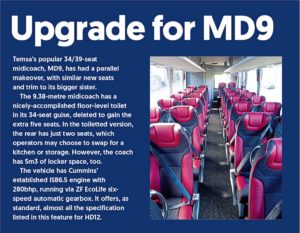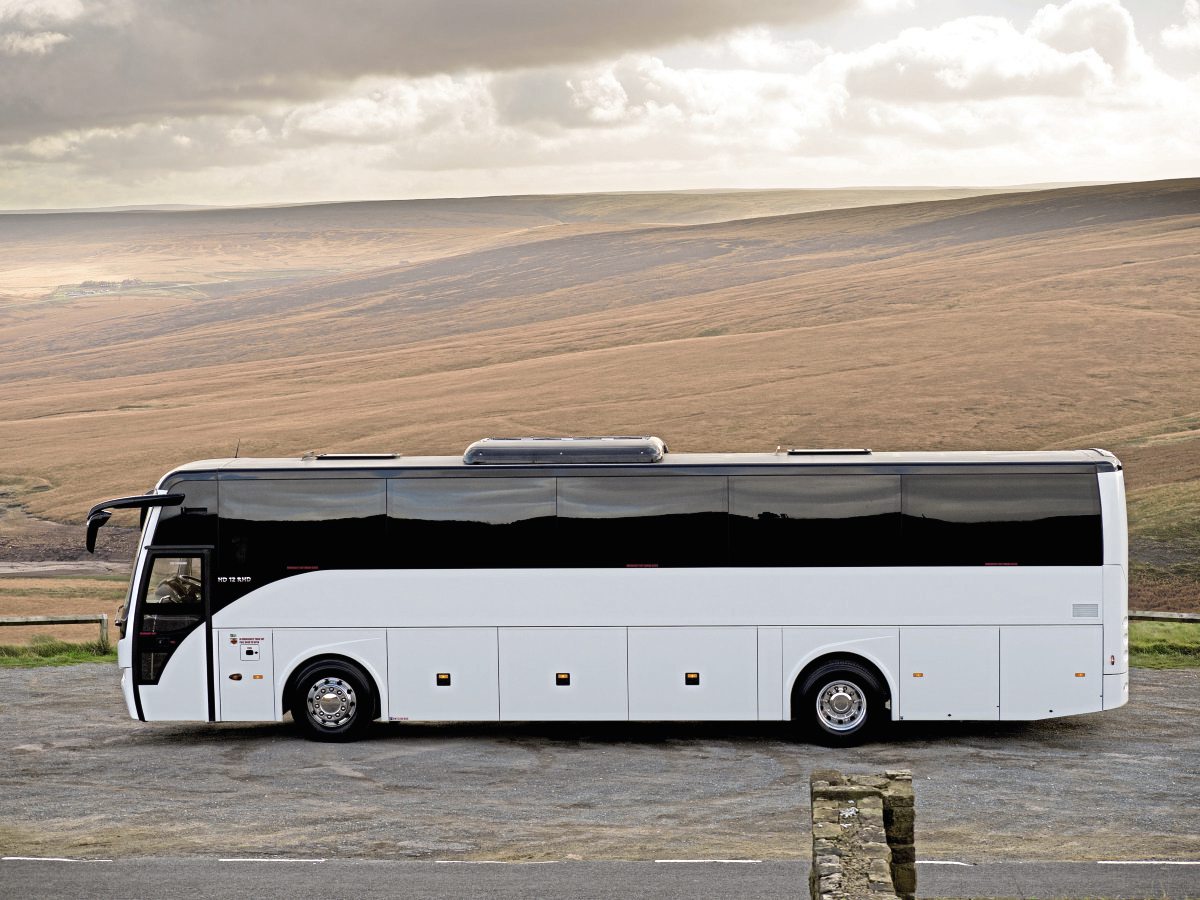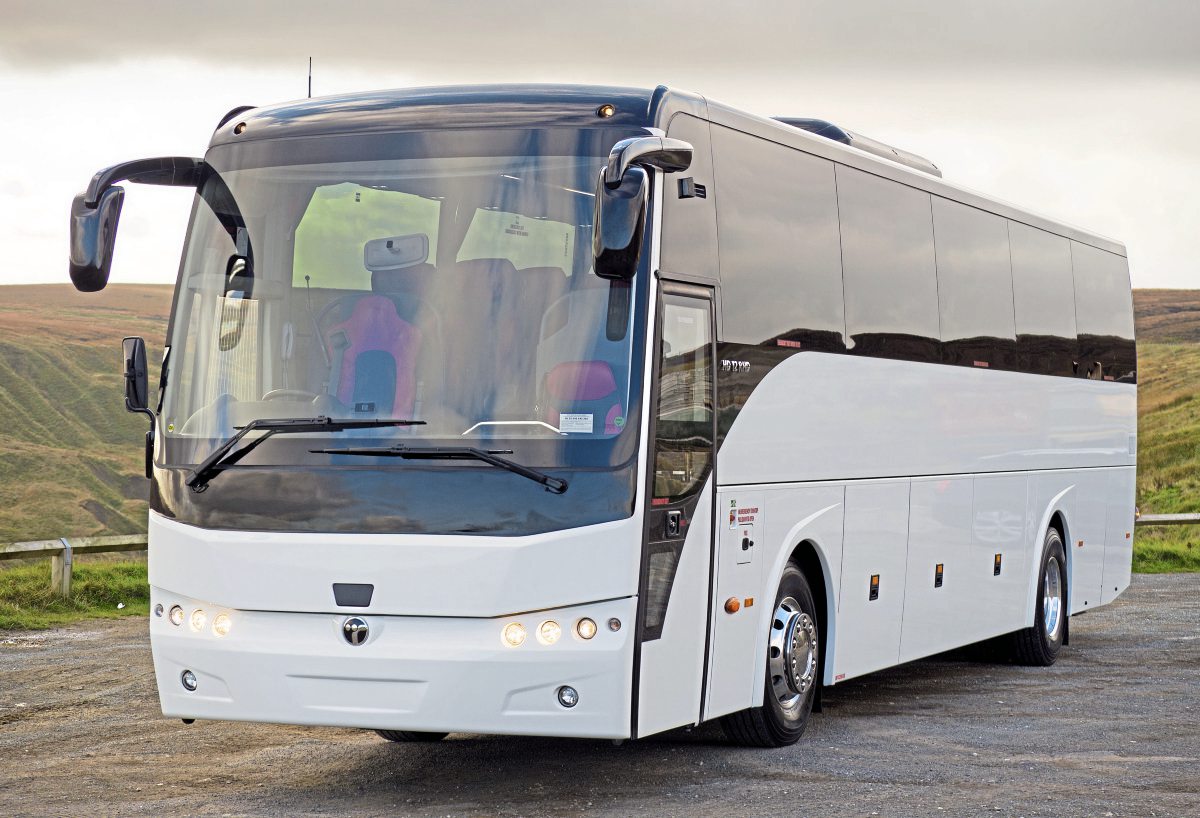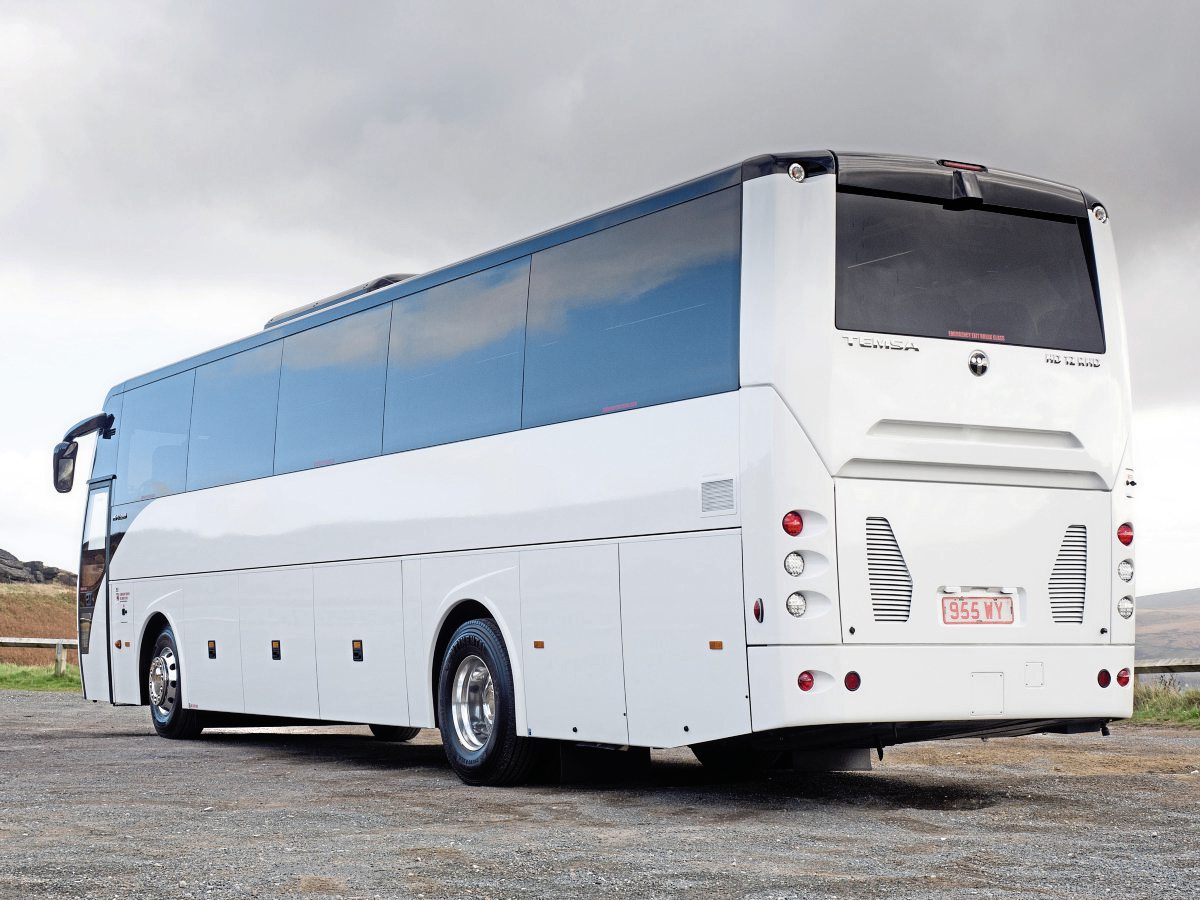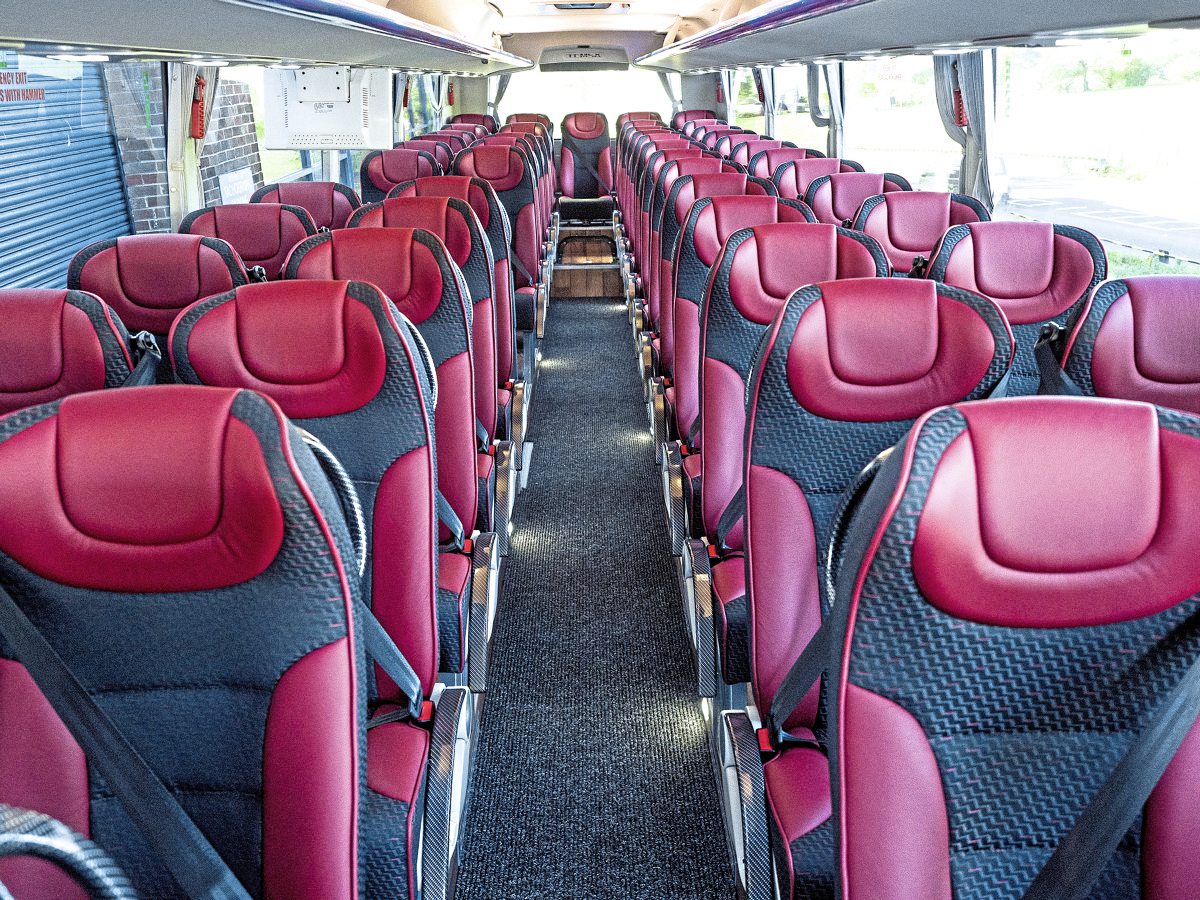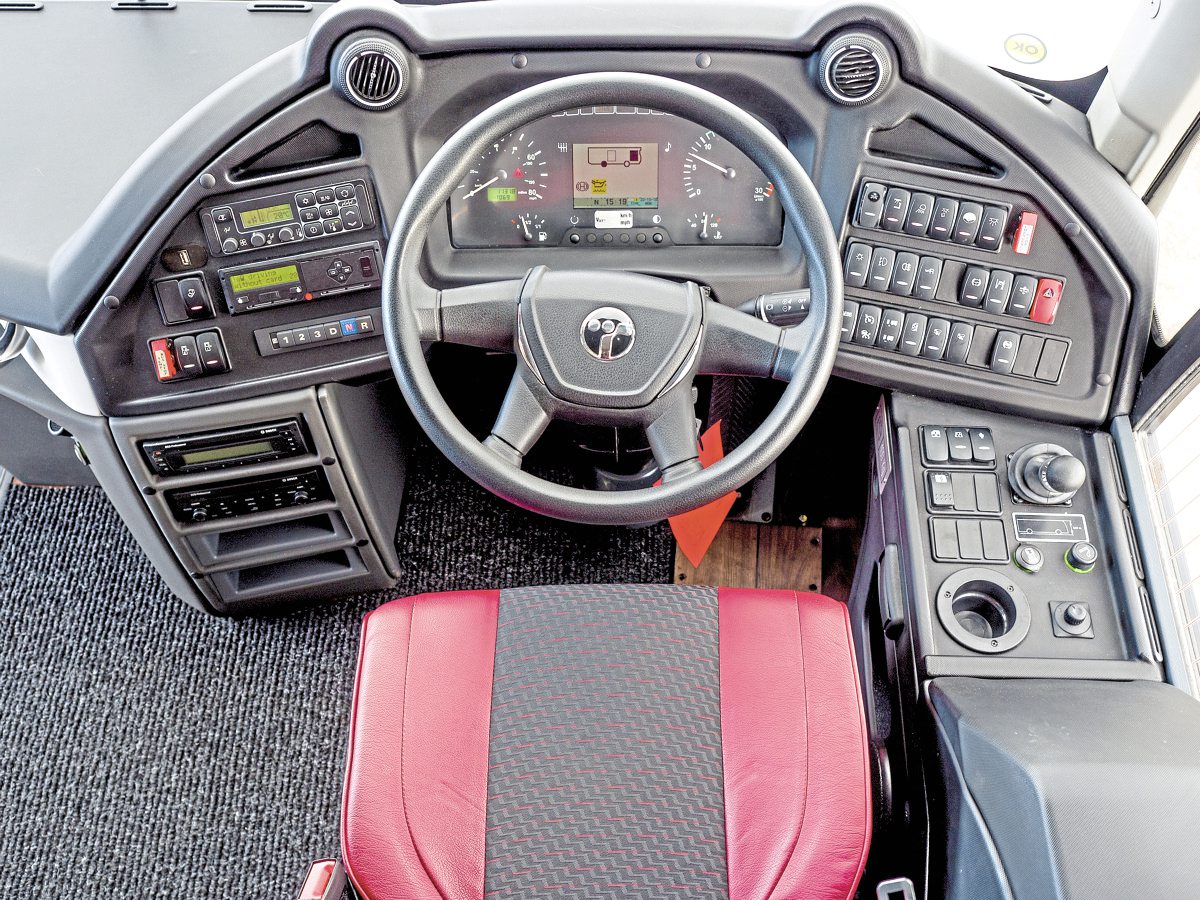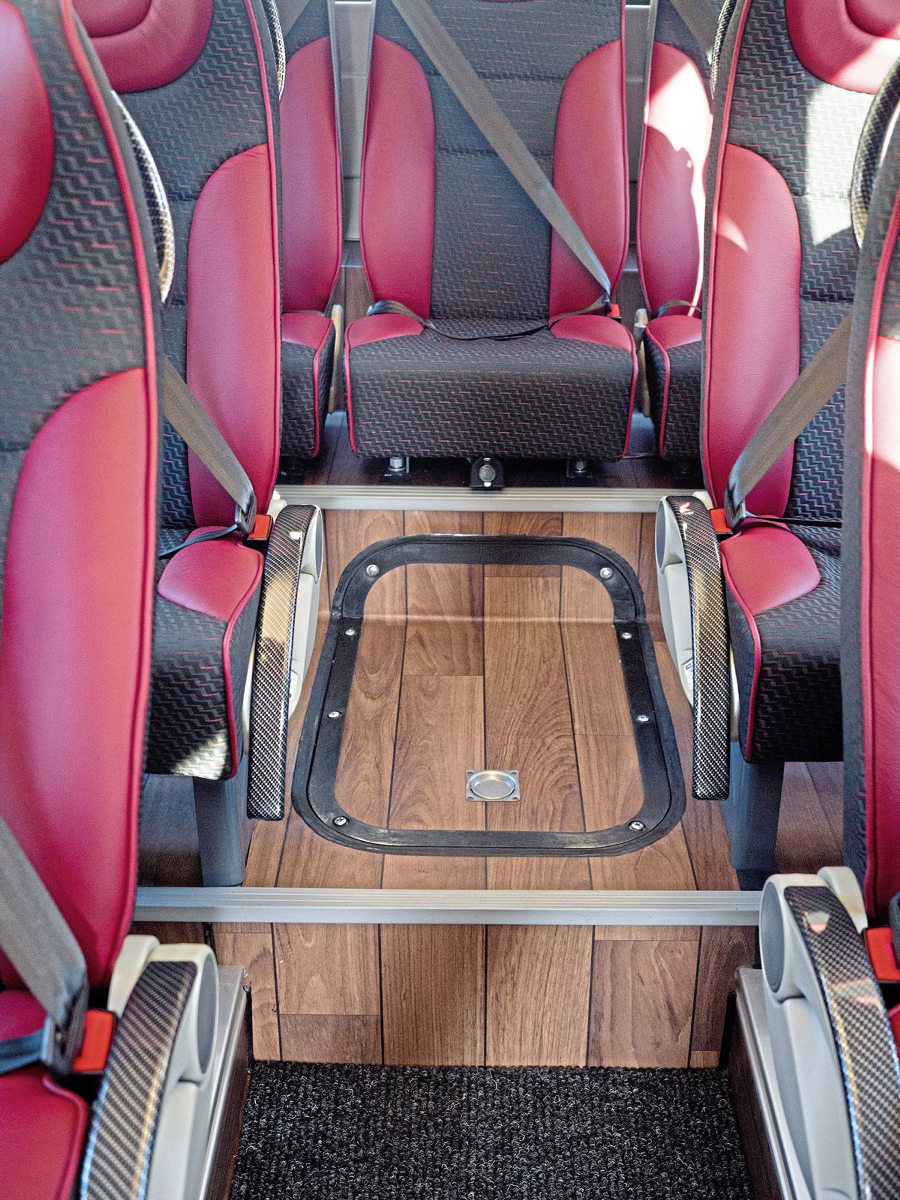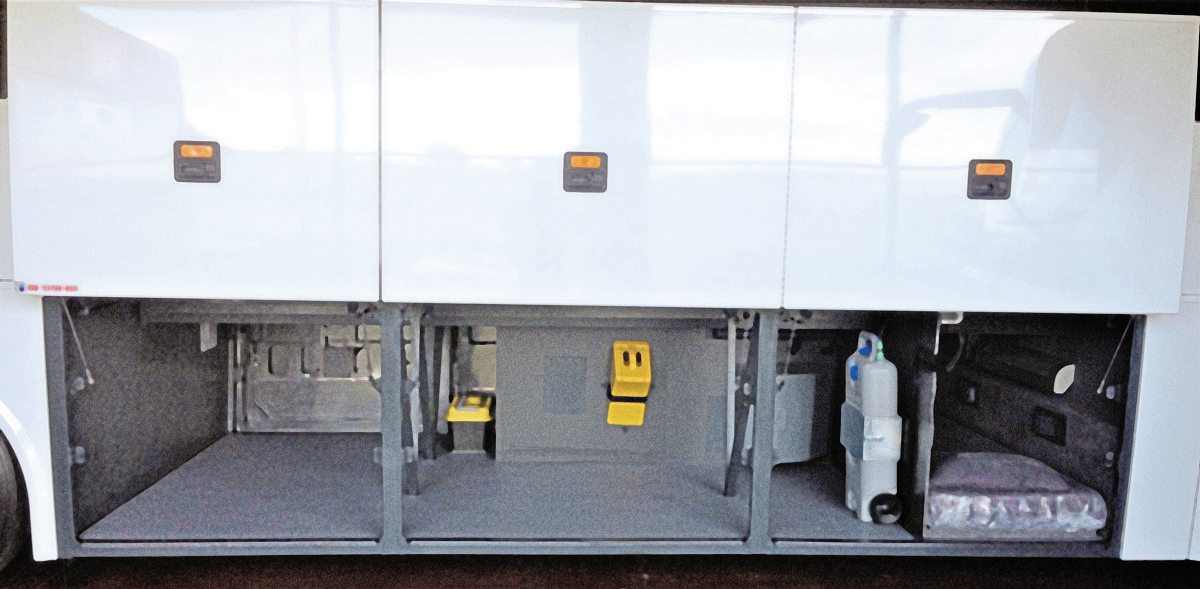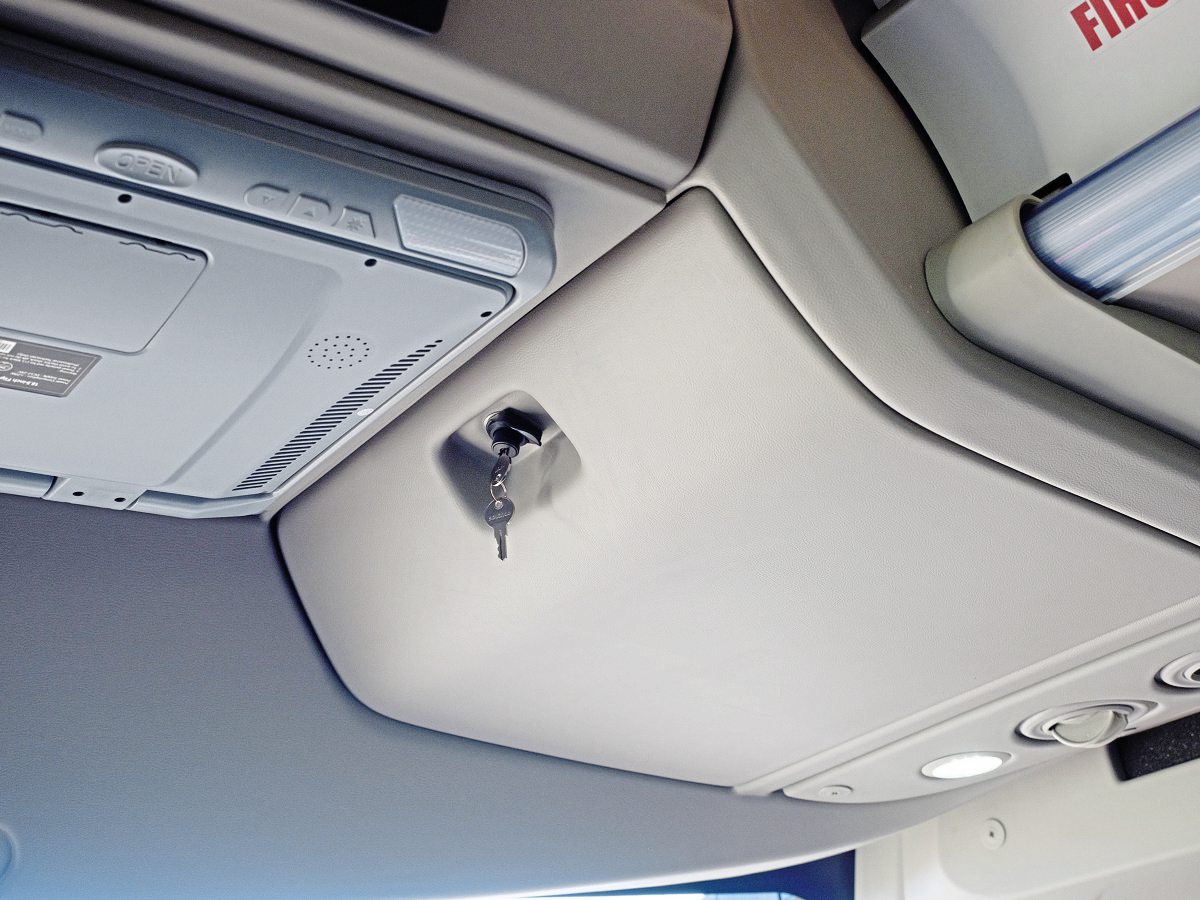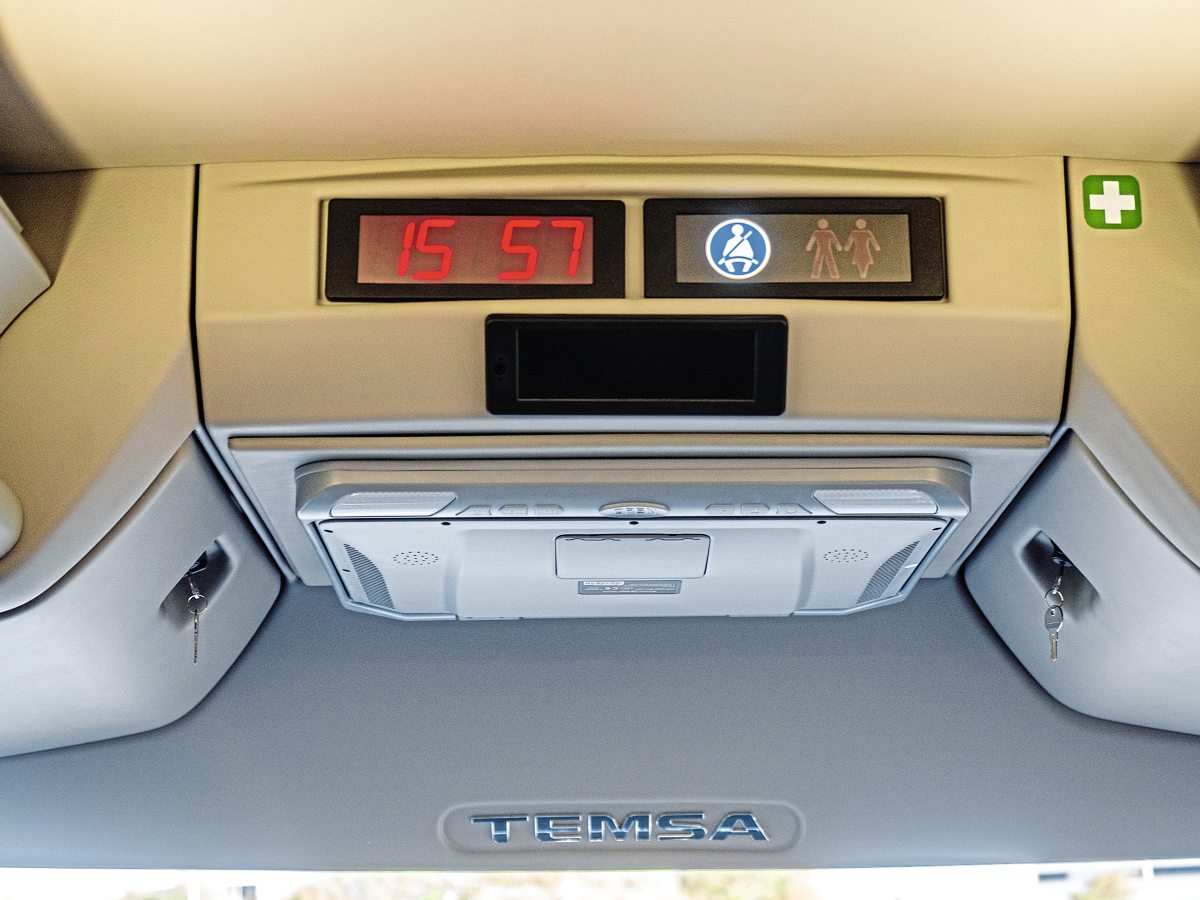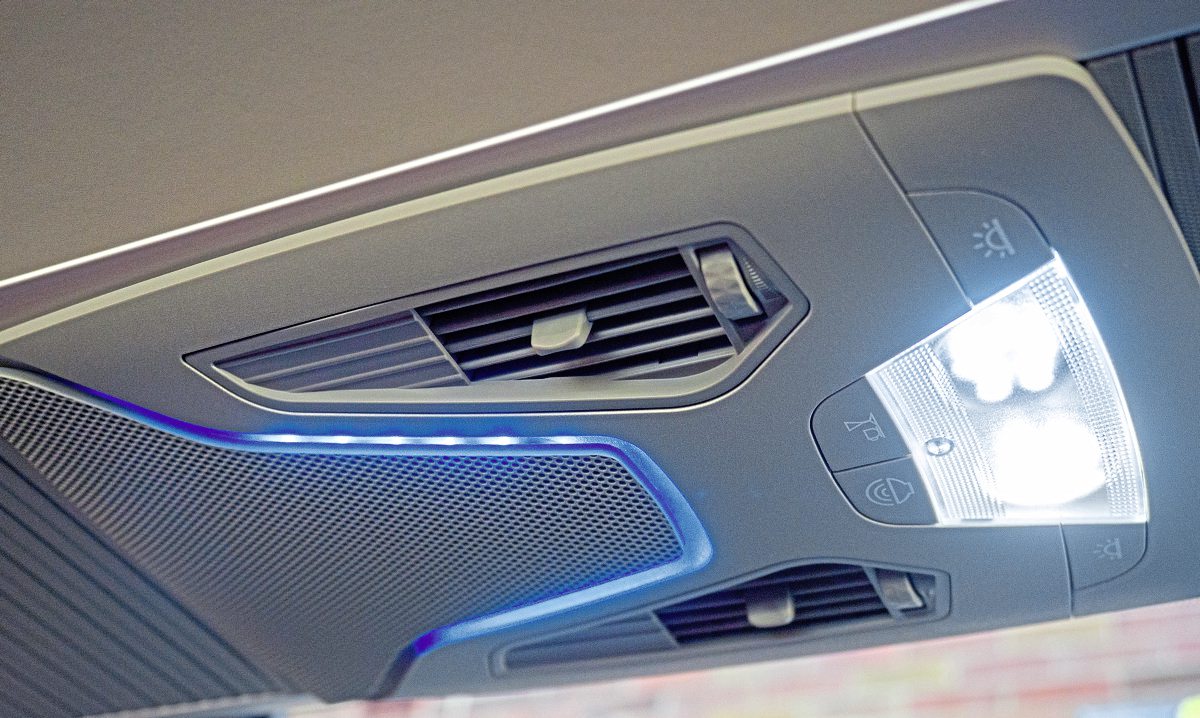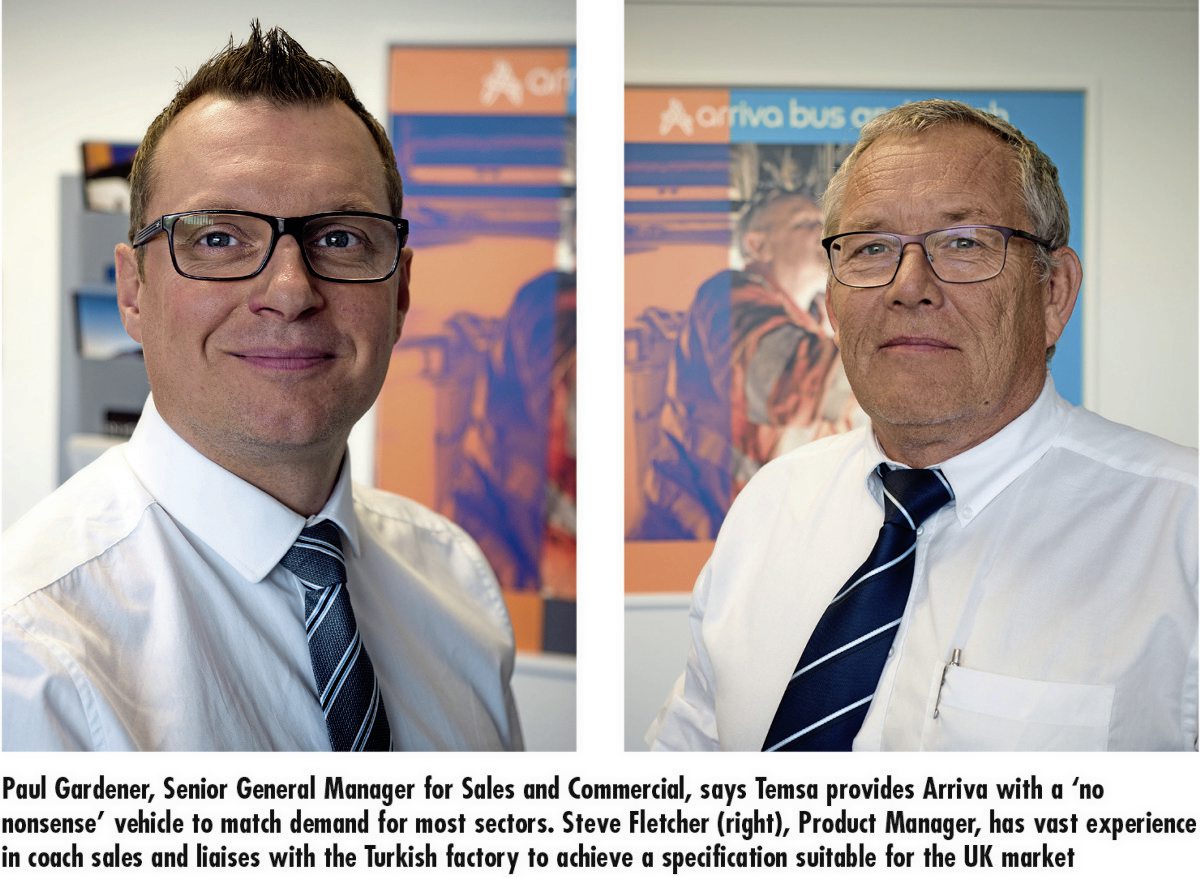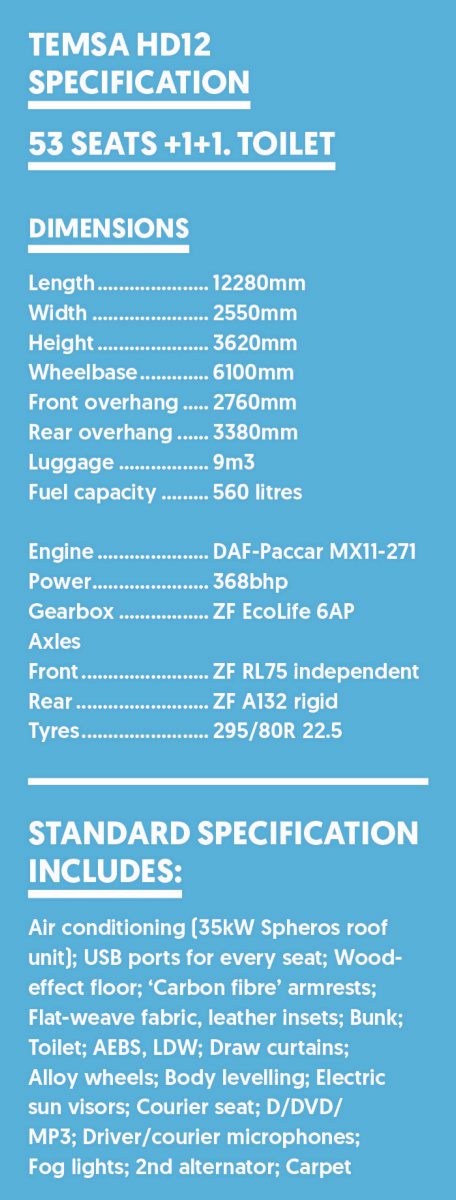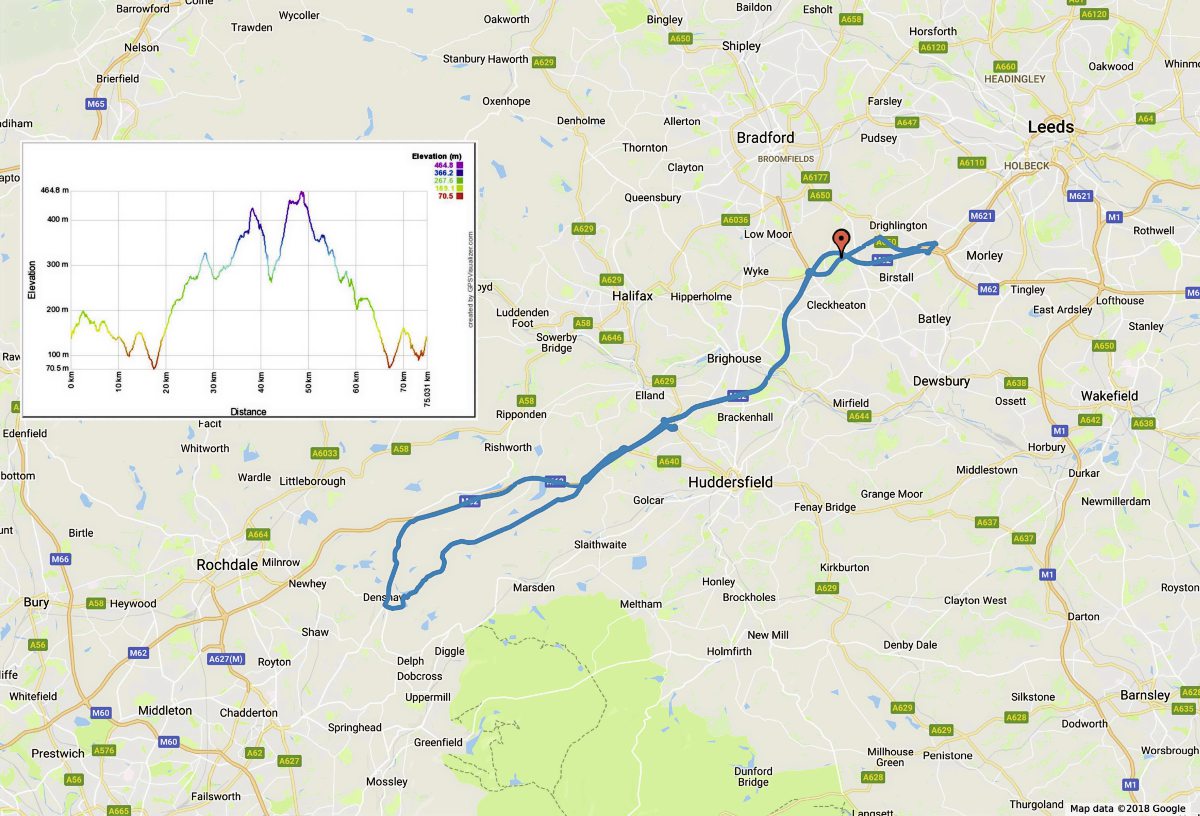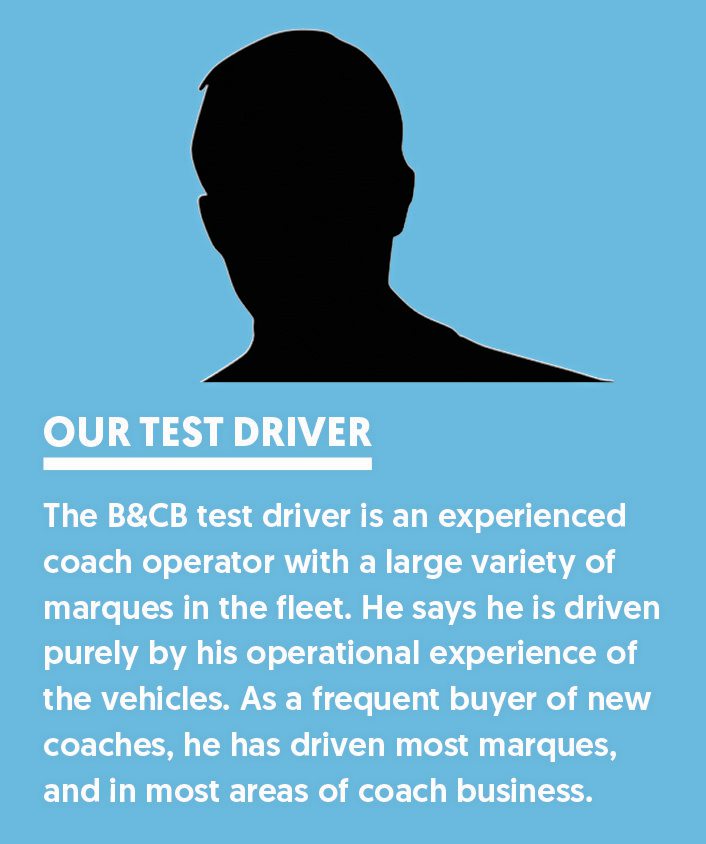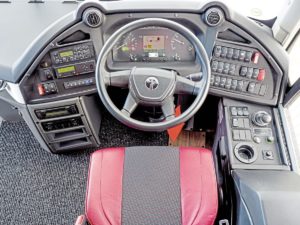On Safari . . .
Operators will be familiar with Temsa’s HD12… a coach with a long lineage. It’s now had a makeover which gives it extra appeal, but our test driver thinks it may be an unsung hero
The coach ‘Stig’ – our anonymous test driver – summed up Temsa’s Safari HD12 coach at the end of the test: “I can just see drivers saying ‘At last. A proper coach.’ This is a driver’s machine.”
Positioned at the budget end of the touring coach spectrum with a retail ticket of £215,000, that’s quite an accolade for this well-built 53-seat tourer. And it’s testament to the old adage that ‘less is more’ – for the HD12 goes right back to basics without ever losing its appeal.
Of course, operators already know all about the Temsa Safari…. don’t they? Launched in right-hand drive in 2005, though in home markets from 2001, it’s been through a few reincarnations, each making improvements on the last and now has the longevity which ensures great parts and glass stock. Surely we’re familiar with the Safari bloodline?
It’s just emerged in its 2018/19 guise with a new interior, modernised with wood-effect flooring, flat-weave seat fabrics and leather inlays, and a general spruce up. It’s my suspicion, though, that Arriva Bus & Coach has underplayed its hand with HD12, for until you’ve driven it, you know only half the story.
It is also better built than buyers have a right to expect. Yes, there are some small compromises but not any your passengers will spot. The body frame is cataphoretic dipped, the luggage doors rigid and the fit and finish well accomplished. And there are no rattles or squeaks betraying corners being cut.
But I’ve jumped the gun. Let’s have a proper look at the HD12….
On the outside
Temsa’s HD12 is a bit of a ‘plain Jane’ in terms of its styling, with no exaggerated bumps, curves or scalloped edges to set it apart from the last 20 years of coach design. But it’s none the worse for that.
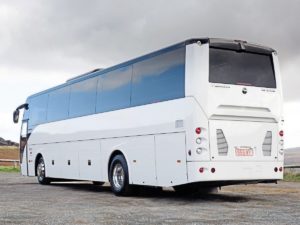 Its simple lines and classic shape have a few subtle styling cues, such as the wheelarch ‘eyebrows’ and some neat work at the back with GRP and a louvred engine bay door, but it’s straightforward, which lends itself perfectly to vinyls and avoids the inevitable ageing which results from faddish design.
Its simple lines and classic shape have a few subtle styling cues, such as the wheelarch ‘eyebrows’ and some neat work at the back with GRP and a louvred engine bay door, but it’s straightforward, which lends itself perfectly to vinyls and avoids the inevitable ageing which results from faddish design.
There are the usual locker doors and access panels, all gas-strutted manual affairs befitting the segment, with fuelling on front nearside and offside, and AdBlue on the offside rear. I should mention the glass, which has individual rear and front panes but three identical central panes, reducing the parts list.
Luggage lockers hold a total of nine cubic metres – that’s more than adequate for a 53-seater, even on touring or cruise ship duties.
Lighting is LED headlamps, with fog lights, high- and low-level rear lights and there are orange marker lights built into the locker door handles on each side, plus a couple of others. The only other external feature worthy of note is the Spheros rooftop air conditioning unit. So let’s open the door and hop aboard.
Interior
The four-step entrance is welcoming and wide with neatly accomplished finish around the courtesy screen, the courier seat and with the handrails which take passengers to the final step, from the driver level to the saloon floor. Again, there’s nothing to not like here, the courier provided with a footrest inset and microphone in the dash.
In the saloon, you’re immediately struck by the impressive aisle width. Our guess is that the Inova seats are a tad narrower than most, because this is one of the most welcoming aisles we’ve seen on any coach. In fairness, the seats side-slide a couple of inches and never felt cramped.
Temsa has devoted some attention to improving the travelling environment, with in-vogue wood-effect flooring and 53 seats (whether you have the toilet or not) trimmed in flat-weave fabric with real leather headrests, side bolsters and piping. The reclining seats have seatback tables (with cup holder but not enough ‘lip’ in our view) and footrests, while aisle seats have armrests and grab handles finished in ‘carbon fibre’ pattern.
The test vehicle had corded carpet in the aisle as far as the rear seats, where another step – with an inspection cover at its centre – had the wood-effect substrate. It’s very neatly accomplished though I did think the inspection cover bolts needed a better disguise – perhaps a deeper recess and blanking covers.
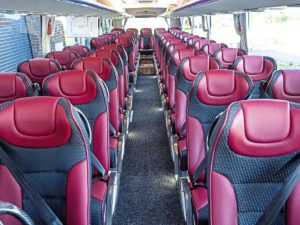 At the offside five seat rows forward is the continental door and stairwell to the toilet. It’s a narrow stairwell and a small loo, but the toilet unit itself is very neat, with a floor drain for the cleaner to aim at. Atop the toilet unit is a narrow sink and hot water tap. It’s the tiny profile of this unit which makes best use of the space but which means removing it doesn’t gain an extra two seats.
At the offside five seat rows forward is the continental door and stairwell to the toilet. It’s a narrow stairwell and a small loo, but the toilet unit itself is very neat, with a floor drain for the cleaner to aim at. Atop the toilet unit is a narrow sink and hot water tap. It’s the tiny profile of this unit which makes best use of the space but which means removing it doesn’t gain an extra two seats.
The seat spacing is a little compromised forward of the toilet, the six pairs here lacking the legroom of all the others. It’s not cramped, but noticeable. Between each seat pair, mounted low down on the seat plinth, are two USB sockets – a standard fitment. We noticed that the space taken on the seat plinth by the robust-looking USB unit may have meant the deletion of a small cover for the metalwork.
Above the seats is a substantial, deep luggage rack which would double as a grab rail for passengers. It carries LED mood lights along its edge and ceiling lights which were very effective. The passenger service units also had blue mood lights and looked very smart, though we noticed that the louvred air panel could not be adjusted for direction, despite having a tab which suggested it.
The saloon heating is via convectors running the length of the coach. They are mounted an inch or so above the floor, leaving a gap which could be a dust and litter trap. We’d have liked to have seen this gap filled with an additional trim.
The driver cab area is a triumph in many ways. The switch layout is conventional, without the ‘does everything’ touchscreen common on modern coaches. Switches are clearly marked and our test driver had no difficulty finding what he needed, with all the main controls to the right, the door switches to the left with the toilet light switch. The DVD system (which runs drop-down screens at the front and middle), tachograph and saloon heating controls are also on the left. Further across, the dash top has a lidded fridge, deep enough to hold plenty of soft drinks.
The tachometer/speedometer are in clear view through the steering wheel. The cruise control is on the right-hand steering column stalk, slightly obscured by the steering wheel spoke but not so much that drivers can familiarise themselves with it in no time.
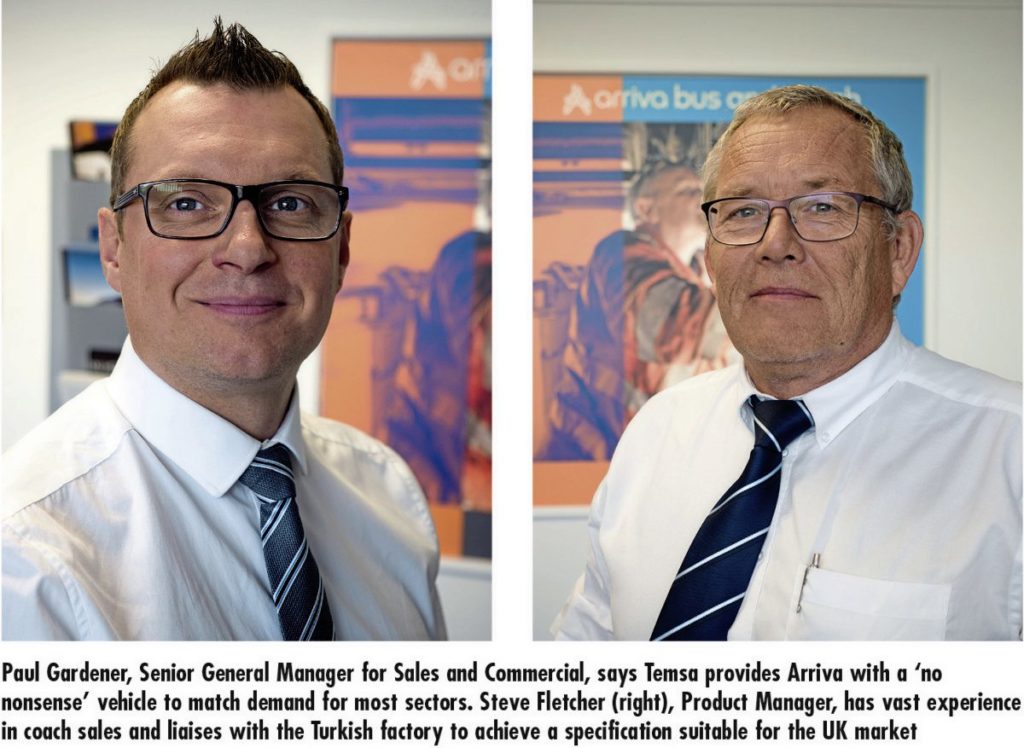 In terms of driver comfort, the HD12 has an Isri seat set close to the controls – Head of Product, Steve Fletcher, says the plinth can be moved back an inch or two for long-legged drivers but after driving the coach, our test driver thought legroom was, after all, adequate. It was just that the driving position puts you right at the front of the coach, without acres of dashboard to gaze over.
In terms of driver comfort, the HD12 has an Isri seat set close to the controls – Head of Product, Steve Fletcher, says the plinth can be moved back an inch or two for long-legged drivers but after driving the coach, our test driver thought legroom was, after all, adequate. It was just that the driving position puts you right at the front of the coach, without acres of dashboard to gaze over.
The mirrors are well positioned and the additional low-level mirror clearly visible, though the small quarter light pane through which you view it is not heated; there’s a possibility it could mist. The driver window is, however heated. The driver has a cupholder at hand on the right, a driver mic, and a coat hook high behind the seat.
At the front above the dash are the clock, the toilet engaged light and the drop-down media screen, installed by Autosound. To the right and left of these are two spacious and useful drop-down lockers (the right one containing the first-aid kit). While on this subject, the coach also has three lockers in the luggage shelf, two at the front and one at the centre.
Driving
The DAF-Paccar MX11-271 368bhp engine and ZF EcoLife gearbox which underpin the Temsa HD12 are at the core of its performance.
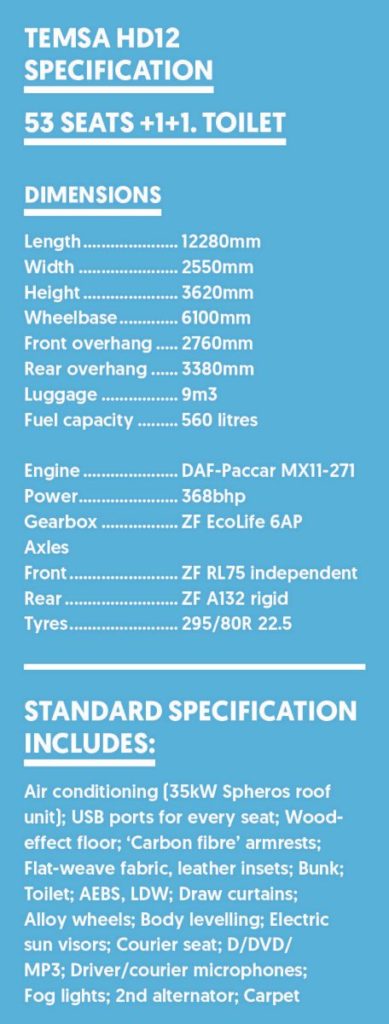 Our test driver was, first of all, impressed with the driving position which gives huge confidence and spacial awareness, and a great view in all directions: ‘This has an old-fashioned ‘Bova’ feel about it,’ he remarked. In drive, the torquey engine gives the coach fairly dramatic acceleration from a standstill. Gearchanges are, as you’d expect, seamless.
Our test driver was, first of all, impressed with the driving position which gives huge confidence and spacial awareness, and a great view in all directions: ‘This has an old-fashioned ‘Bova’ feel about it,’ he remarked. In drive, the torquey engine gives the coach fairly dramatic acceleration from a standstill. Gearchanges are, as you’d expect, seamless.
Our 47-mile route took us out on to the M62 west to the A672 junction north of Manchester to Denshaw, before turning back on the A640 through spectacular moorland scenery before rejoining the M62 at Juntion 23. It took the coach up some torturous Lancashire hills and out on to Saddleworth Moor along twisting roads and often damaged surfaces. The HD12 delivered unflinching travel, with just the right amount of feedback through the steering wheel, avoiding the ‘woolly’ nature of some electrical steering systems, which insulate the driver from the road.
Our test driver said there wasn’t a single moment at which he felt anything other than in complete control and involved in the driving experience. It was as interesting as it was effortless, and coming from someone who has front-line vehicles costing twice as much as the HD12, that is a ringing endorsement.
The only criticism of the ride was the slightly ‘crashy’ reaction of the independent front suspension to sharp bumps and potholes, though as with all road tests, we were mindful of the coach having no passenger load aboard.
The driveline and ZF axles have a reputation for reliability. Steve Fletcher says operators of the HD12 report average fuel consumption of between 9mpg and 11mpg, depending on route and driver. The HD12 also has an impressive turning circle and, mindful of rear outswing, drivers should have no problems manoeuvring it in a packed depot, the mirrors providing a clear view of the rear corners, the advanced driving position offering great spacial awareness.
The Lane Departure Warning did its job without being over-sensitive, and we thankfully had no need to test the AEBS. And apart from body levelling, that’s it for electronic extras on the HD12.
For passengers, the ride is comfortable and quiet. The Inova seats fitted were very comfortable, with a great profile and ample bolsters to prevent them sliding about on the flat-weave cloth. We’d be interested to see how well those seats would accommodate a couple of rugby teams but for 90% of passengers, they will be very pleased with this travelling environment, with great views from almost every seat.
Road noise was completely absent, even opposite the centre door. At the rear seats, there was some whine and rumble from the transmission. It wasn’t alarming or loud, but it contrasted with the impressive noise control elsewhere in the vehicle.
Verdict
The Temsa HD12 with its all-new interior is the culmination of 17 years of evolution of the Safari bloodline, and has stuck doggedly with its original principle of providing value for money.
If you’re in the market for a premium coach, this isn’t it. If you’re looking for a workhorse of a 53-seater which will adapt to almost any role and are happy to dispense with the bells and whistles, the Temsa HD12 is right on the money.
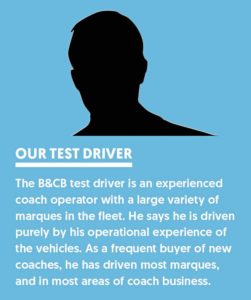 All too often, the decision to lower your sights when buying new can lead to trouble in the yard, your drivers having a moan if the machine they are presented with doesn’t make for a boast in the coach park. This won’t happen with the Temsa HD12 because it is so driveable; it’s a package which ticks so many boxes for drivers, and a coach which anyone can master within minutes, because there’s no confusion of systems to baffle newbies. The classic lines and flat panels make a great canvas for your livery and punters will find the interior welcoming and airy, practical and comfortable.
All too often, the decision to lower your sights when buying new can lead to trouble in the yard, your drivers having a moan if the machine they are presented with doesn’t make for a boast in the coach park. This won’t happen with the Temsa HD12 because it is so driveable; it’s a package which ticks so many boxes for drivers, and a coach which anyone can master within minutes, because there’s no confusion of systems to baffle newbies. The classic lines and flat panels make a great canvas for your livery and punters will find the interior welcoming and airy, practical and comfortable.
Nor should there be any prejudice against the Turkish origins; Temsa is a truly global company with some of the most modern factory systems in the business yet, Steve Fletcher says, they are a joy to deal with should a customer want to go off-piste with the interior. Lead times are extended for anything bespoke but Arriva has stock of coaches identical to the test vehicle at Cleckheaton.
The service back-up includes, the massive DAF network, but Arriva’s coverage includes Cleckheaton and Wellingborough plus a number of mobile technicians. Anything not on the shelf can be supplied from Temsa’s German stock within 24 hours.
At the end of 2019, the Safari range will get a facelift and some structural changes, and this should encompass the arrival of a 13-metre version.